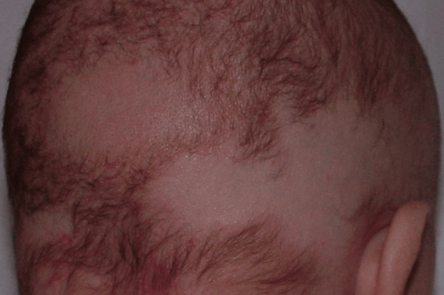Occipital neonatal alopecia is a common condition characterized by transient hair loss in the occipital region of newborns during the first few months of life. It is classified under the ICD-10 code L65.8.
This phenomenon is widely observed in newborns of both genders, particularly in infants with dark skin. Previously, it was erroneously believed that this alopecia was caused by friction against a pillow. However, it is now known to be a physiological phenomenon.
Hair development on the hairy part of the fetal scalp begins at 9-12 weeks of gestation, and by 18-20 weeks, the entire scalp is covered with anagenic hairs. By 26-28 weeks of gestation, the hairs transition into the telogen phase, starting from the frontal to the occipital area. The hair in the occipital region remains in the anagen phase and is not involved in this process. After birth, these hairs may abruptly enter the telogen phase and inevitably fall out within 8-12 weeks after birth.
However, some newborns, especially those with dark skin, may already present with localized alopecia at birth, as their transition to the telogen phase is delayed compared to newborns with light skin.- Alopecia areata
- Aplasia cutis congenita
- Halo scalp ring
- Pressure-induced Alopecia
- Plagiocephaly
- Tinea capitis
- Triangular Congenital Alopecia or Temporal triangular alopecia

